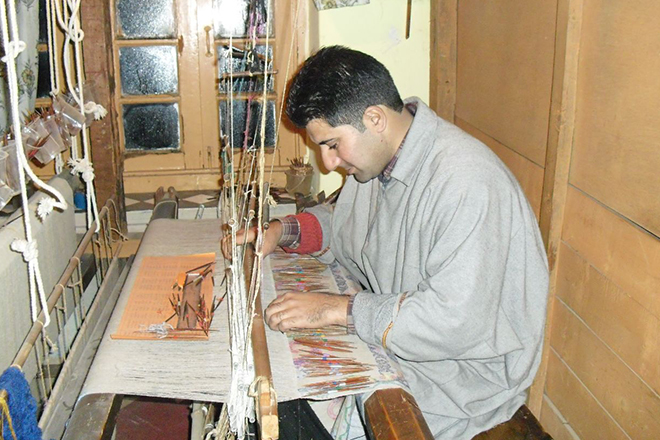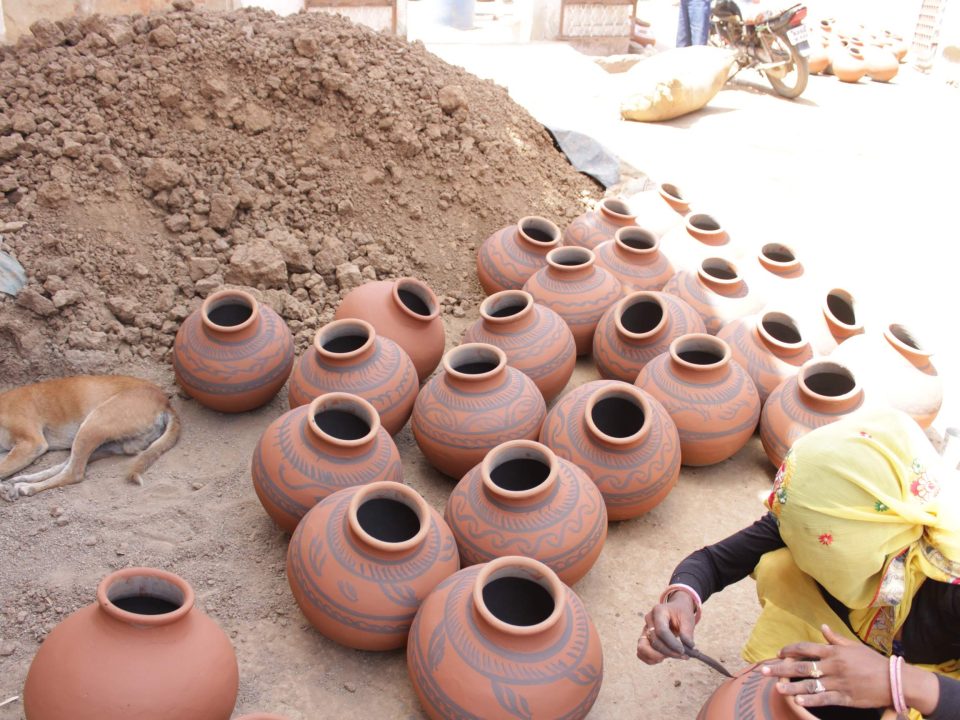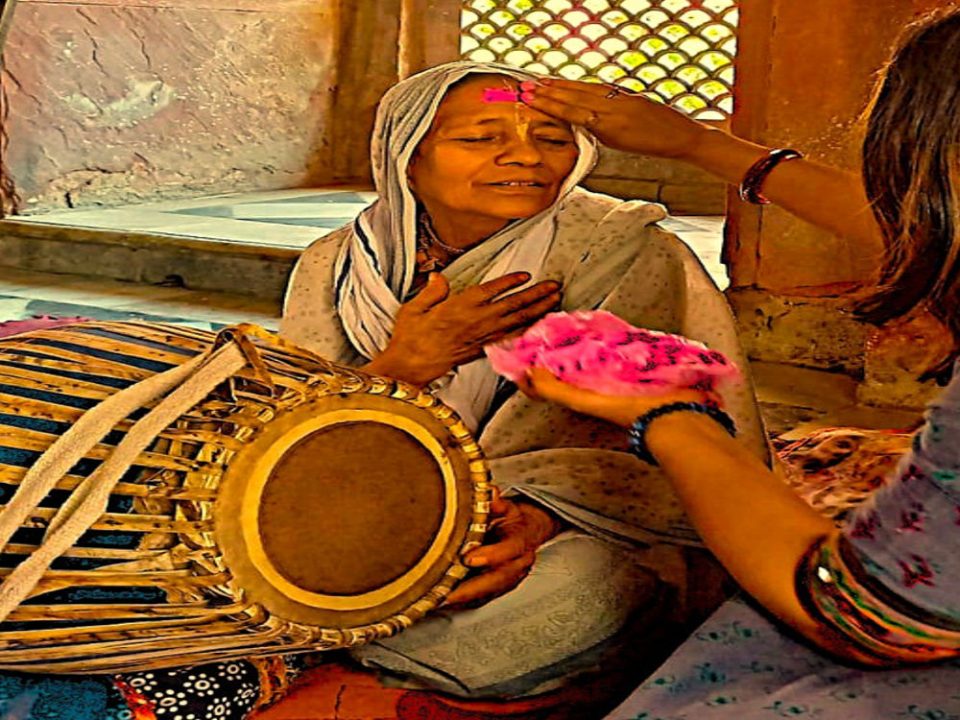Kani Weaving Craft from Charismatic Kashmir
Kani Weaving Craft from Charismatic Kashmir
Kani weaving is a centuries-old craft practiced by skilled craftsmen who have learned it from their forefathers. Kani shawl hand-weaving is the exquisite craft of Kashmir in which delicate and intricate designs are woven with extreme care and skill. Kani shawl is made from fine Pashmina wool that makes it quite soft, light-weight and warm. The craft is practiced over the entire Kashmir from past generations, and the government of Jammu & Kashmir has given its geographical indication (GI).
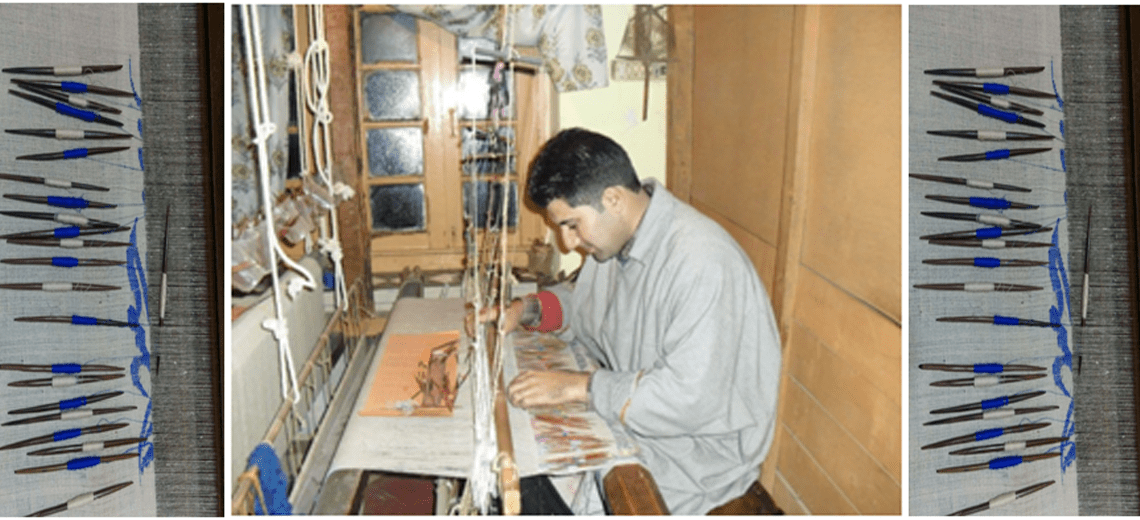
Some people say that it has derived its name from the place ‘Kanihama’. The designs are traditionally inspired by the picturesque surrounding and natural beauty of Kashmir. However, weavers have experimented with a variety of designs inspired by paisley, calligraphy, poems, etc. Kani weaving is a careful process wherein it takes from a few months to years in completing a piece, depending upon the intricacy and finesse of design.
The shawl is woven on a four-shaft four treadle loom with a reed made from wood that supports delicate pashmina weaving. The base weave is twill, and the design is created in tapestry technique, making it a weft-faced structure. The design pattern is drawn on a graph paper and, after that, the numbers of warp yarns per weft color are calculated for each pick. Yarn calculation for the entire pattern is called talim. The weft yarns (in required colors) are wound on small wood spools, locally known as Kani. These are then inserted over a specific number of warps according to talim. Then the weft-interlocking is done when the color is changed. The weaving is a very tedious and slow process and requires meticulous planning and a high level of skill.
Indian Institute of Crafts and Design, Jaipur organized a Kani weaving workshop from 24 to 28 February 2020.
It was conducted by Mazid Ahmad Mir who was awarded National Award by the Ministry of Textiles in 2010 and State Award by Government of Jammu & Kashmir in 2005 for his craftsmanship and contribution to the development of Kani shawl craft.
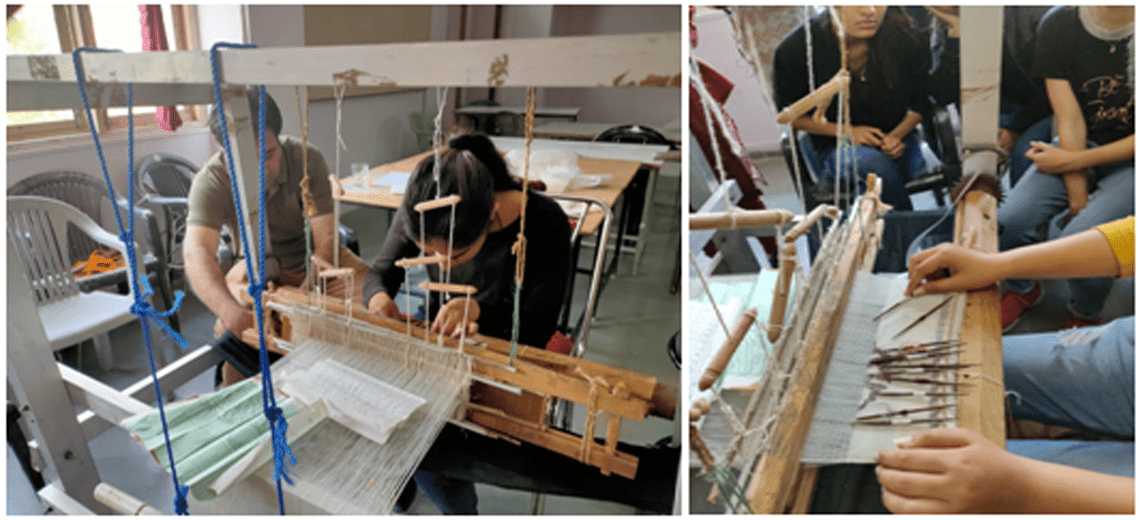
The students got an opportunity to learn about the craft and weave technique, patterning, and designing, and the painstaking process to translate designs onto the loom. They inserted weft wounds on wood sticks and practically wove on a sample loom for better understanding and hands-on learning of the craft.
-By Ms. Shalu Rustagi, Professor IICD


